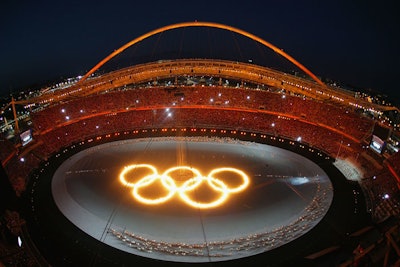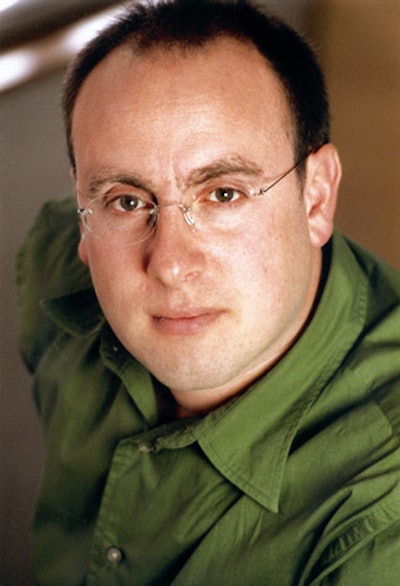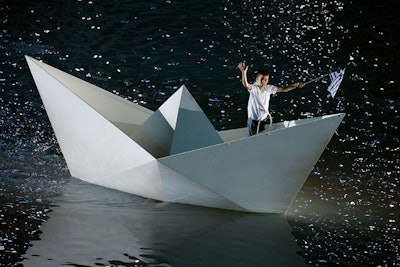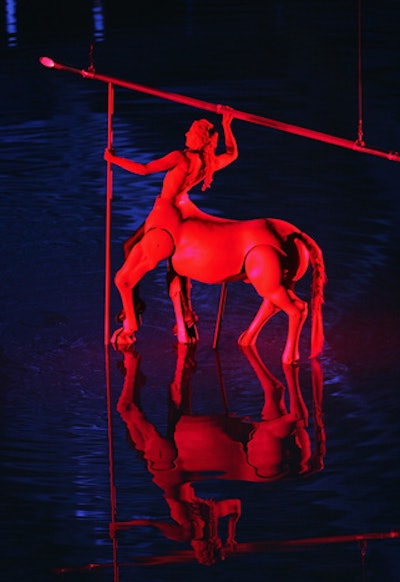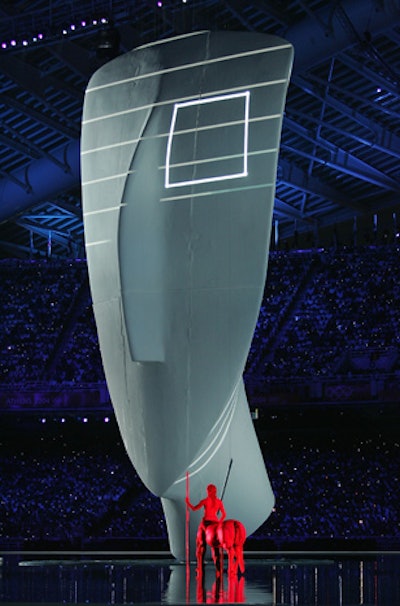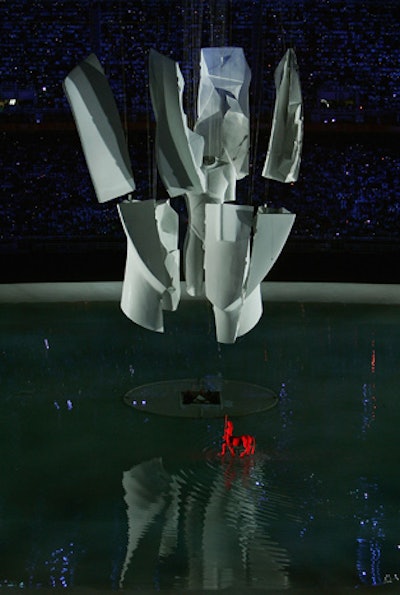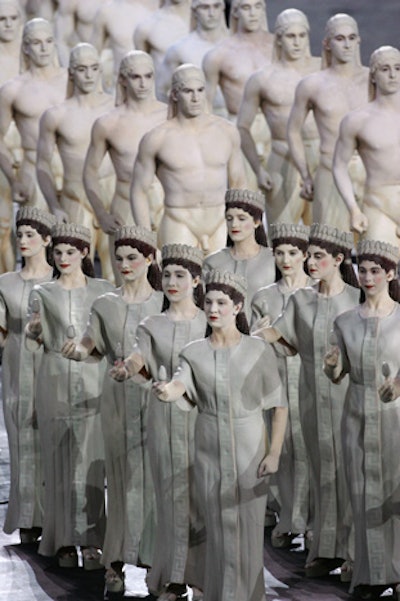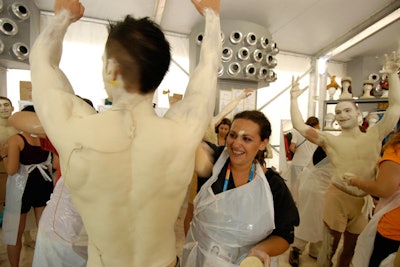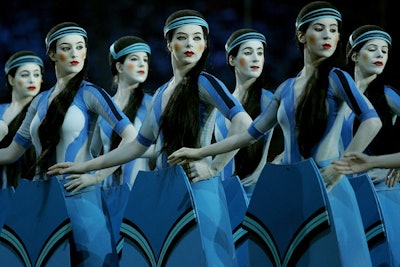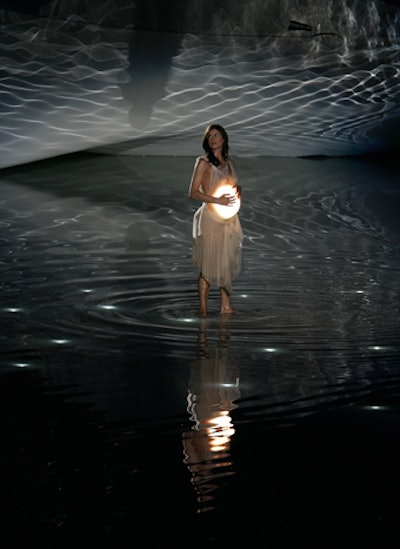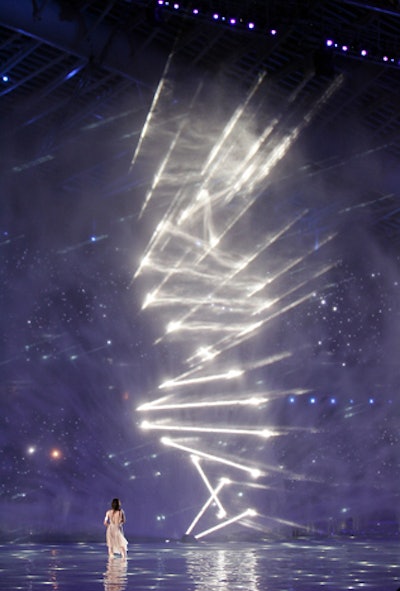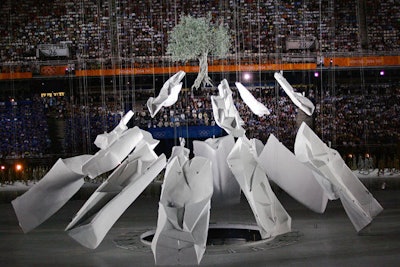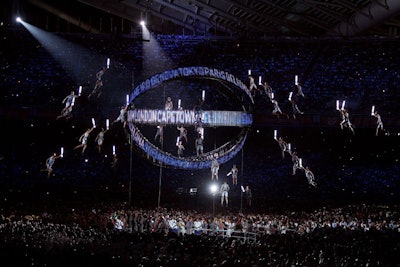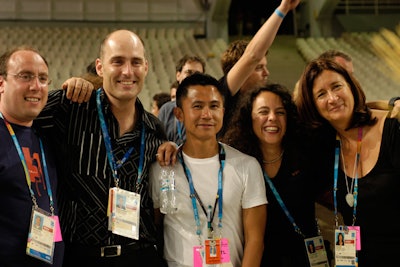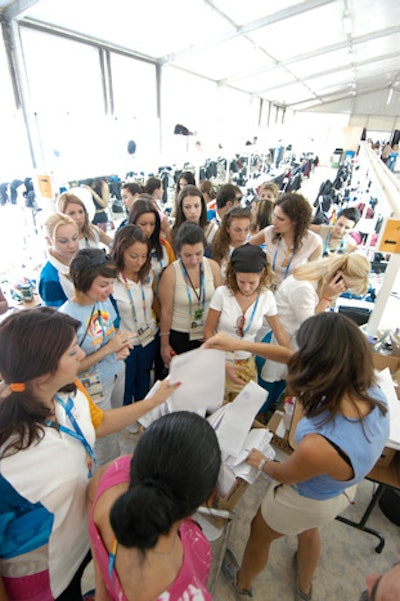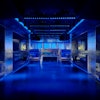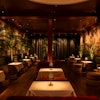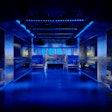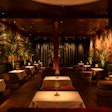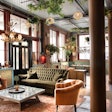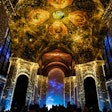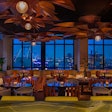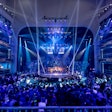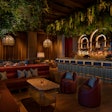Despite doubters from around the world, David Zolkwer and the team from Jack Morton Worldwide produced an artistic Olympics opening ceremony that drew international raves. Here he gives us a blow-by-blow account of putting on the big show for the 2004 games in Athens.
Title: Director of Jack Morton Public Events, Jack Morton Worldwide
What He Plans: Zolkwer handles large public events—usually one biggie a year—as well as the occasional corporate event, from the London office of Jack Morton Worldwide, the New York-based international event marketing agency. Most recently, he led the team responsible for the opening and closing ceremonies of the 2004 Olympic Games. Zolkwer was project and artistic director of the Bafta-winning 2002 opening and closing ceremonies of the 17th Commonwealth Games in Manchester, England.
Staff: For the Olympics, 435.
Budget: “I can tell you three things: Our budget was 33 million euros [about $43 million] when we pitched, the budget did increase significantly, and we came in under budget.”
Career Path: Zolkwer attended the Guildhall School of Music & Drama and Middlesex University before joining the Fringe Theatre in London. He moved into corporate and experiential brand communications in the 1990’s, and joined Jack Morton 10 years ago as an executive producer.
Age: “A boyish 41.”
Where He Grew Up: Manchester, England
Where He Lives: Maidenhead, 25 miles west of London
Biggest Challenge: “Creating and maintaining a spirit of trust and integrity among people who are all working under duress. That, and creating and telling a story that is of its time and place, and yet has relevance and impact for a truly diverse global audience.”
Best Tip: “Make it personal. If you go into an organization to make a buck, you’re going to be found out. If you invest yourself, you’ll come out a winner.”
Favorite Magazine: Empire
Favorite Band: The White Stripes
A SIMPLE BEGINNING—SORT OF
The opening ceremonies started with a 28-second countdown—one for each of the Olympic Games held since the 1896 Athens event—and a procession of drummers marching into the stadium. They were followed by a young boy in a boat that looked as if it were made of paper. “It had naïveté to it, a simple boat sailing across the water, to give a sense of Greece’s place and its big ideas,” Zolkwer says. “Greece is a seafaring nation, and this was a nice way to introduce the water. The boat was a simple, metal-framed structure that ran on wheels with someone inside pushing it along, directed by a remote team telling them to go right or left. Sometimes [manpower] works best. It was a very simple gag.”
The boat sailed on a pool filled with more than 530,000 gallons of water that took six hours to fill—and fewer than three minutes to drain. “It was a stunning thing to behold,” Zolkwer says.
“Overall, the most exciting achievement for me was being able to turn a sports stadium into a really beautiful theatrical environment,” Zolkwer says. “We packed the space with the most incredible technology, either buried in the pit or suspended in the air; there was a huge amount of very complex technology being employed, but it wasn’t at the expense of theatrical storytelling. When you came in, you just saw a lake of water. It took a huge amount of ingenuity to achieve that, but from the audience standpoint it looked very simple and beautiful.”
WORKING CLOSELY WITH PERFORMERS
The next theatrical element of the ceremony introduced the centaur, the mythical creature that was a hybrid between bestial man and intellectual, evolved man. Creating the centaur was quite a complex exercise, Zolkwer admits, “because we didn’t want to create a pantomime horse or a realistic centaur—we wanted a stylized version of a centaur. It involved a long research-and-development process of modeling what we wanted it to look like and working with the performer who would be harnessed into the front of the centaur. The rear half was mechanized, so as the performer moved, the mechanized legs would move.” That R&D process with the performer lasted six months.
“Many of these [elements] were performer-dependant,” Zolkwer says. “Rather than do all the R&D and then cast it, the way a performer reacted with the technology and how the technology impacted the performances were an important part of the R&D process.”
GETTING A BIG HEAD
The centaur threw a lit javelin toward a giant sculpted head that rose from the water. The towering, nearly featureless sculpture represented the earliest rendering of a human head, and traced man’s understanding of himself from primitive times. Projecting geometric shapes onto its face demonstrated how ancient Greeks used science and physics to understand the universe. The centaur provided scale—the head was 57 feet tall—and its javelin broke the head apart into smaller pieces to reveal a classically sculpted figure. The giant face “was basically like a babushka doll, with one [piece] fitting inside the other,” Zolkwer says. “Making each set of pieces—and there were 18 of them—fit inside the other was very complicated. They were held together with c.phps, which were released when you sent a radio frequency to them. Each piece had four cables running through it, so when it traveled it could move in 3-D. And it was all managed from a pit below ground.”
This element, Zolkwer adds, was really about the precision of the assembly and the technology that allowed it to hold together and then be released on cue. “It was going to be a showstopper no matter what—whether it worked or didn’t,” he says. To ensure that it would work, Zolkwer and his team built redundancy into the process: “If one of the hooks failed to release, the cables would pull it apart anyway.”
A NOD TO ART HISTORY
Moments later, a procession of classical figures representing not periods in history, but art in history, paraded through the stadium. “They were there to represent different art forms and the way they made sense in history,” Zolkwer says. “The philosophy for the whole parade was to make stylized art come to life. So nothing draped, nothing hung naturally; all the costumes were made of plastics and molded materials, so it looked like art come to life. Body paint also played a huge part in the process.” Sixty people—from sculptors and painters to shoemakers—created the costumes, which were manufactured in a terminal at the old Athenian airport.
“Another part of the challenge was engaging these volunteer performers,” Zolkwer says. “The classical parade was cast from big, open auditions. The process started in November of 2003 and concluded in February of 2004; we held 300 hours of auditions and cast 600 performers in the parade. Overall, there were 700 performers in the opening ceremonies.”
A PREGNANT PAUSE
The final figure in the parade (and one of Zolkwer’s personal favorites) was a pregnant woman. As she walked into the water, her belly began to glow—a feature intended to represent the potential and innocence of the future. As she looked up into the sky, a glowing DNA sequence, “the thing that makes us all the same and all unique,” Zolkwer says, slowly appeared. “It was about the new Book of Life, and man’s understanding of himself and his place in the universe.”
“The effects were a combination of innovation and invention and good old, tried-and-tested technology that’s been around a long time,” Zolkwer says. “The first step was to create the prosthetic. We needed a human-looking prosthetic that read as natural. Packed within that prosthetic were hundreds of battery-operated LED lights that were controlled by radio frequency.” “The glowing
DNA strands were a combination of a mist screen and lasers. Compressed air under the pool blasted out a screen of water that was 98 feet wide and 82 feet high—a huge shower curtain that served as a projection surface for four lasers that created the impression of this spiraling strand of DNA.”
MIXING HIGH TECH AND LOW
After the DNA sequence disappeared from view, the pool was drained in preparation for the parade of athletes. But before they entered the stadium, there was one last theatrical nod to Greek history: a scenario depicting the olive tree that sprang from the rock after Athena struck it with her javelin, according to Greek mythology. The movement of the rocks “was a sophisticated piece of technology,” Zolkwer says. “There were 24 separate trajectories for the rocks to travel upon, and each rock piece could move in three dimensions.”
To figure out the paths the rocks would take, Zolkwer and his team simulated the projections in 3-D and animated them to see how they behaved. Then, they programmed the paths virtually before transferring everything into the stadium. “We were able to make creative decisions and understand the challenges and see how the rocks behaved [outside of the stadium],” Zolkwer says. “It probably saved us two weeks of time.” Less high-tech was the tree, which was constructed of painted Styrofoam.
LIGHTING THE TORCH
Normally, the Olympic torch is lit at Olympia, Greece, and travels to the Olympic host city by relay. “Obviously, doing that in Athens wouldn’t have been very exciting, so they took it around the entire world and visited all the previous host cities,” Zolkwer says. To give the audience a sense of that journey, Zolkwer and his team used simple aluminum rings to represent the globe and suspended running performers to represent the running of the torch. The stunt “required sophisticated programming and a lot of rehearsal,” he says—25 hours to be exact. “Thirty-five runners were hooked into flying harnesses, sent up in the air and tracked forward to the center of the globe. The LED batons they held were battery operated; the runners switched them on to evoke torches. We wanted the whole thing to have a glowing quality to it.”
For the actual lighting of the cauldron, Zolkwer’s team collaborated with the designer of the cauldron to come up with a theatrical idea. “We staged the whole thing and built the hydraulic staircase,” Zolkwer says. “The final torchbearer [ascended a stairway]—the bridge between the ground and the sky. It was a simple idea but powerful. The whole thing weighed 2.5 tons.”
BEATING A WORLD OF NAYSAYERS
The Jack Morton team of 435—including Zolkwer, Antony Spanbrook, Dave Low, Lucille Essey, and Lois Jacobs—and its army of volunteers performed under extreme scrutiny. “Working in Greece for two years, we were very conscious of how the media and the world were perceiving Greece—and it wasn’t good news that was coming out,” Zolkwer says. “Having lived in the middle of it, I’m sympathetic to where that perception came from, but in those three and a half hours, that perception was transformed. The next morning, the papers all said it was the best ceremony ever, and that the Olympics were home. They completely surpassed the world’s expectations.”
This story originally appeared in the December 2004/January 2005 issue of the BiZBash Event Style Reporter.
